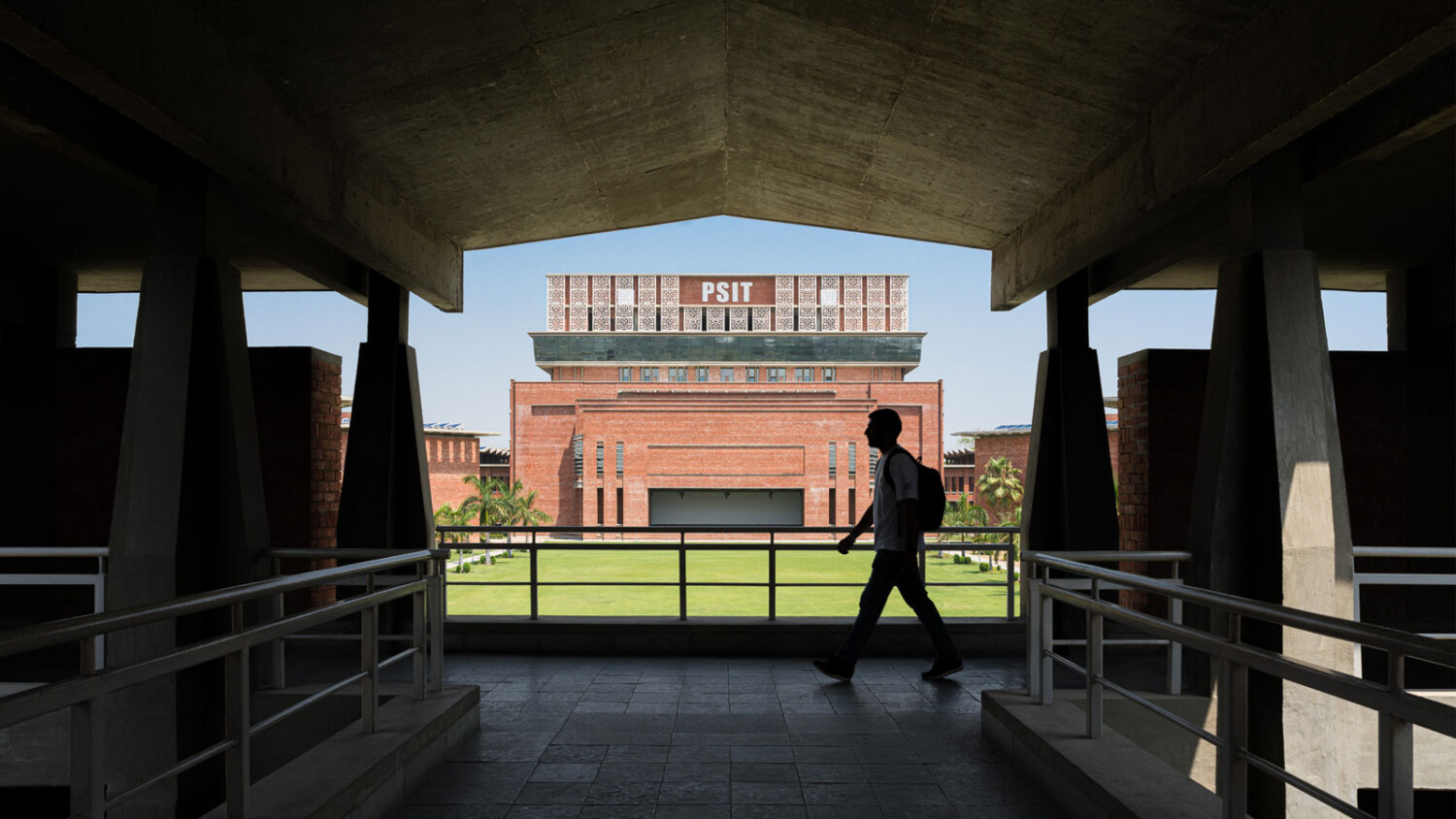Nakul Jain Speaks on Photographing the Pranveer Singh Institute of Technology in Kanpur
Nakul Jain of Team NJDC is a Chandigarh-based architectural photographer who is taking us on an adventure today to the Pranveer Singh Institute of Technology located in Kanpur, India. PSIT is designed by Locus Associates with Mukul Gupta as the principal architect and Sapna Khattar as the interior architect.
Nakul was the principal photographer on this project, working alongside his team of assistant photographers, Rajat Bhagat and Anshul Chopra of Team NJDC. Team NJDC’s work here is just lovely, full of strong lines, sharp shadows, and plenty of human elements added in. The shoot spanned 4 days, and Nakul has a lot to share, so we’ll dive right in:

Nakul speaks a bit on how his career in architecture photography began. He says: “I’m an architect by education and was always interested in making films and doing photography from childhood. Through associating with creative minds in the field, I found my passion for creating images and films of spaces, which was not just an artistic pursuit but a very technical one as well. Right after completing my education and training, I jumped into creating films related to architecture and social causes. Creating images for projects followed shortly. I learned architectural photography from watching other professionals share their experiences either online or in some cases by meeting them personally. There was no guidance or training in this field for me. Many architects taught me a lot while I took up photography of their projects, and I learned many things while on the job by making mistakes and rectifying them.
Over the past years, we have now arrived at a system of creating a balance of commercial and editorial images for architects which helps them ‘publish’ as well as ‘sell’ their projects.
Our admiration for good architecture brings a sparkle to our eyes and we immerse ourselves in an attempt to communicate with the space. I always believe the space guides the framing and the light (sunlight) guides the moment for capturing the image. One needs to be sensitive and truly present in the space to be able to capture it at the right time.”
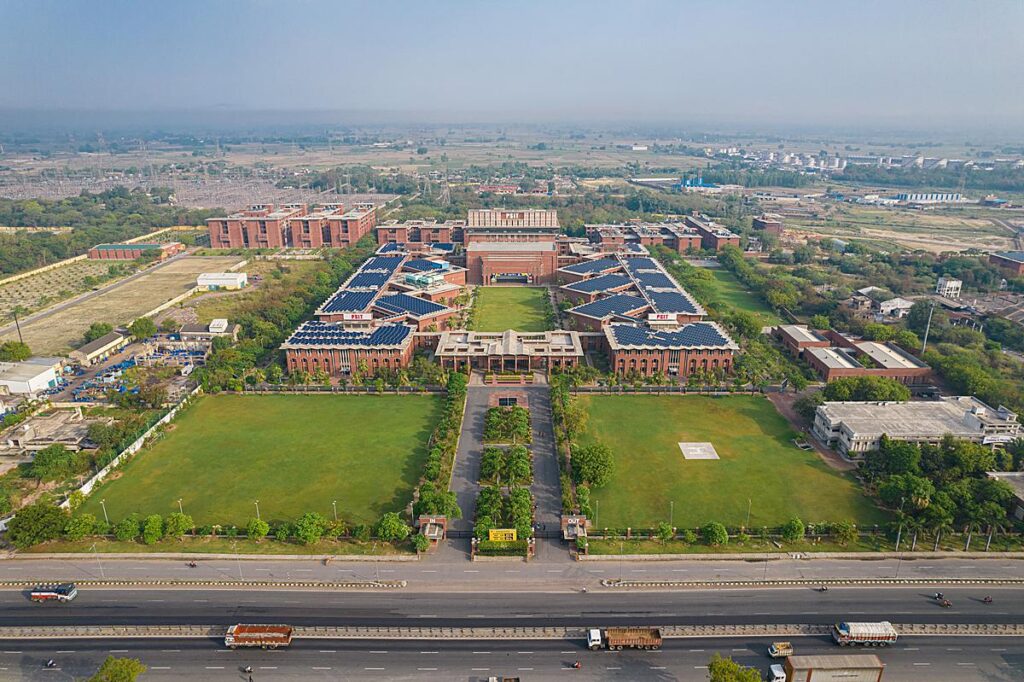
Throughout this project, you’ll find so many beautiful examples of powerful framing, like in this shot below. I love the way the foliage guides our eyes to the structure without feeling cluttered or too tense.
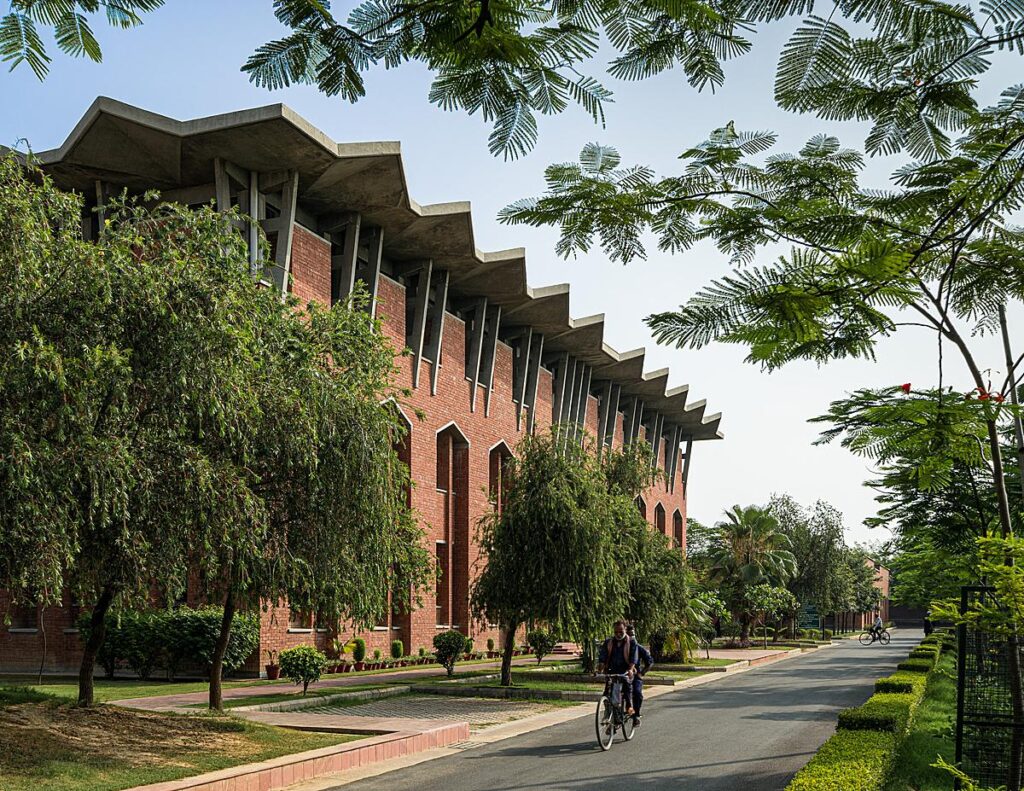
I was curious about what Nakul and his team’s shoot days were like at PSIT. He divulged, “The shoot days were planned in a summer month in northern India. This is one of the hottest times of the year to be outdoors moving around with clunky tripods and camera gear. The most challenging aspect was actually to keep ourselves hydrated in the scorching heat. We started early every morning to avoid the harsh sun and also capture the nice morning light over the bare brick walls and courtyards.
The campus was green enough for us to also take shelter and breaks while at it. The images in which we had to call the students to feature as models were also to be managed within the time before their regular classes began. Cloudy skies and rain hampered our first day of shooting so we had to re-attempt as many as 8 shots on the second day while also following the schedule along with it. So the production days were both exciting and kept us on our toes. The campus provided us with an electric golf cart to go around places quickly and that saved a lot of our time and energy!”
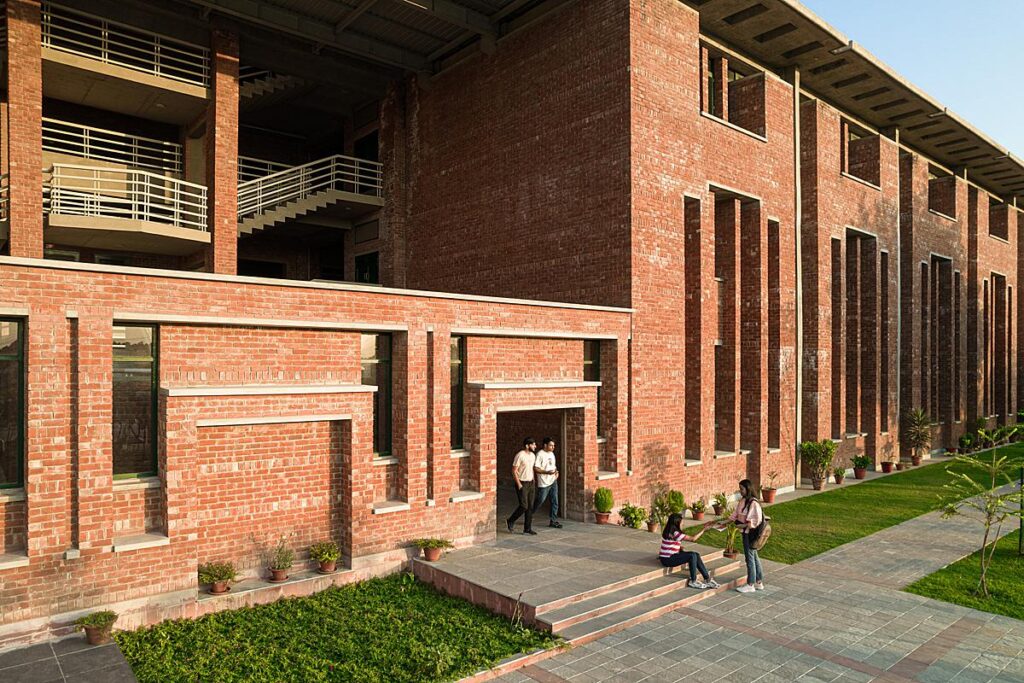
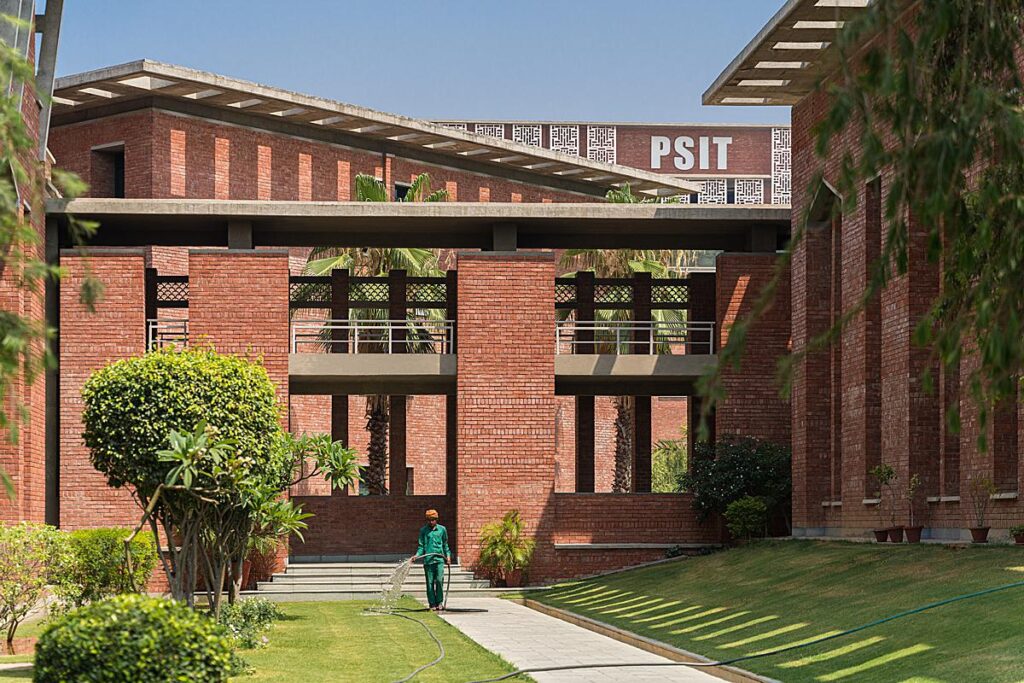
“We spent 4 days on location which essentially included the first day as a recce day, the second and third days for the actual shoot, and the fourth day as a contingency extra day,” he explains.
“We did an extensive tour of the entire campus on the first day and evening to understand points of importance, create mental images of the desired frames, and also take some sample shots with our mobile devices.
Following that, we did a detailed breakdown of determining the time slots for shots to be created. Since it was a big campus, we did not decide exactly on the shots but allocated a particular zone for a window of time so that good light could be captured in that area. Following our plan we then set up our camera in the spaces as per the schedule to capture the sun and light to create the essential drama of light. It did happen at a few spots that we got unexpected human activity which enhanced the frames.”
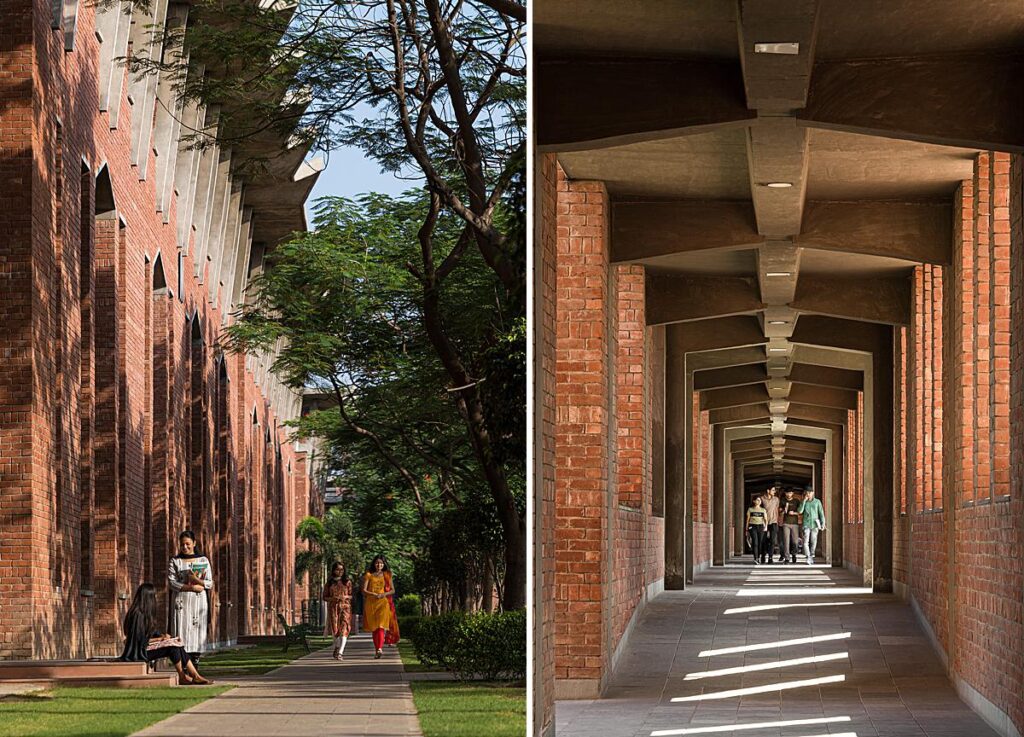
Nakul spoke to me about one of his favorite images – and mine too! “[This image had] many trials to try and capture the sharp shadow of the overhang falling directly on the ground below, while also framing the unique facade of the auditorium block. I observed this phenomenon on the first day but did not figure out the correct vantage point to be able to capture this.
On the last morning of the production schedule, while on a final round of the space, I decided to explore the corridors of the campus like a student and went walking through all the covered corridors on different levels. This was when I discovered this vantage point and then I took a trial shot. I returned to the spot in the afternoon when the summer sun was overhead for the shadow to fall perfectly. While the image here is not heavily edited, the wait was a worthwhile one. This image would not be possible in winter months because the sun angle would be slant.
Similar to this, the other images in my favorites were timed in the peak summer sun to accentuate the clean lines/voids and overhangs designed by the architect. The summer sun in India helps to bring about the true colors and brightness of the bricks. But images have to be carefully framed so as to capture the beauty of exposed bricks.”
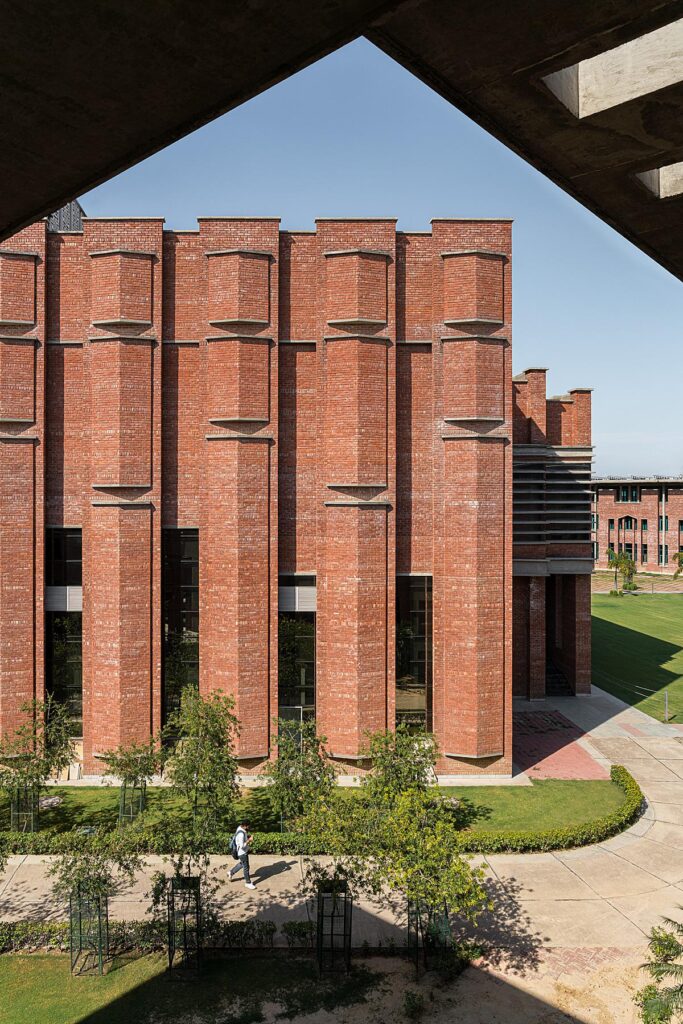
Just look at the wonderful patterns of light here spilling onto the bricks, pulling out their texture and color. We get a good sense of place and time and can almost feel the warmth on our skin through our screens.
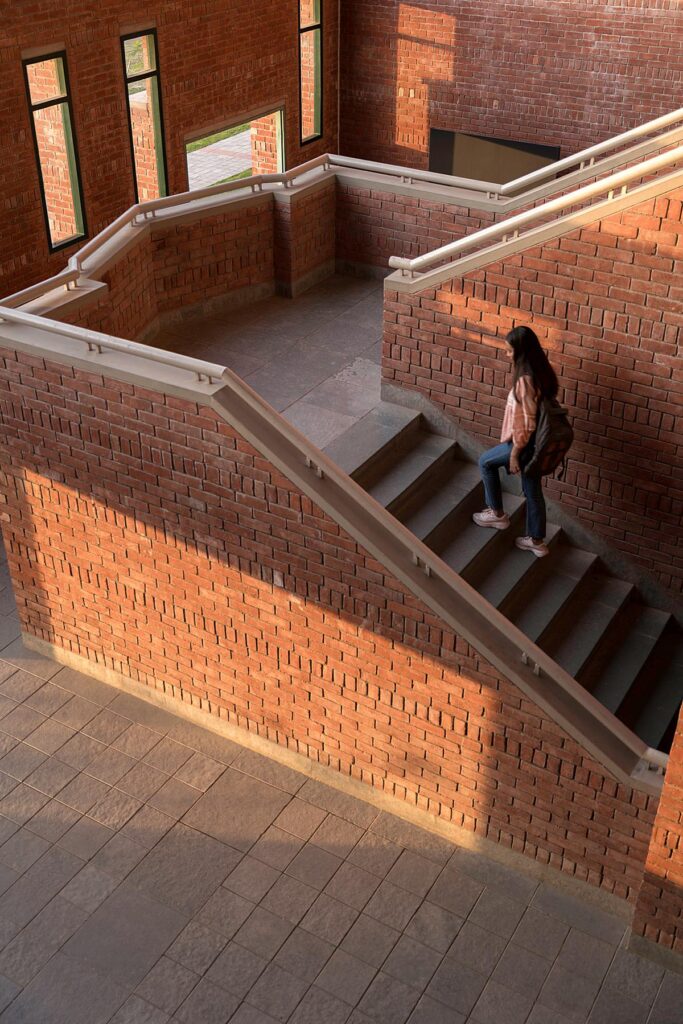
I particularly love this next shot with its incredibly graphic qualities. The deep shadows, the splice of light coming in, and the tidy framing that draws our eye across campus to the other building – it’s so good!
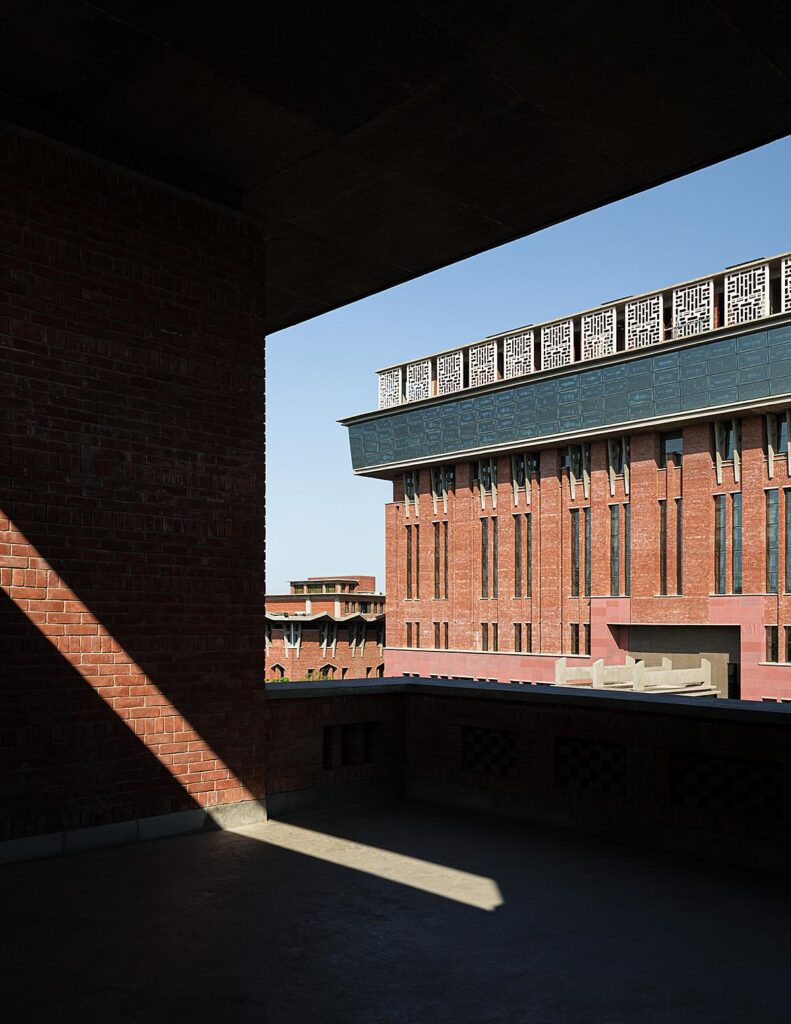
“The play of sciography accentuates the built form further and creates unique patterns on the walls and open spaces of the built form,” Nakul explains about the campus’s design. “The breaks and connections among the buildings provide for breather spaces for the students. Spatially, the buildings gel together in a very harmonious way. The connecting corridors create interesting spaces between the academic blocks. The overall symmetry in the plan is also strongly felt when one goes around the campus creating an ease of understanding and orientation.
What I found the most exciting was the changing sun paths that create many moods on the campus at different times of the day. There are many picturesque vistas designed which enhance the scale of the buildings with the unique triangular folded plate concrete overhangs. The hostel for the students is also well designed creating a community feeling among the students with activity areas planned along the rooms keeping the identity of an Indian courtyard intact.”
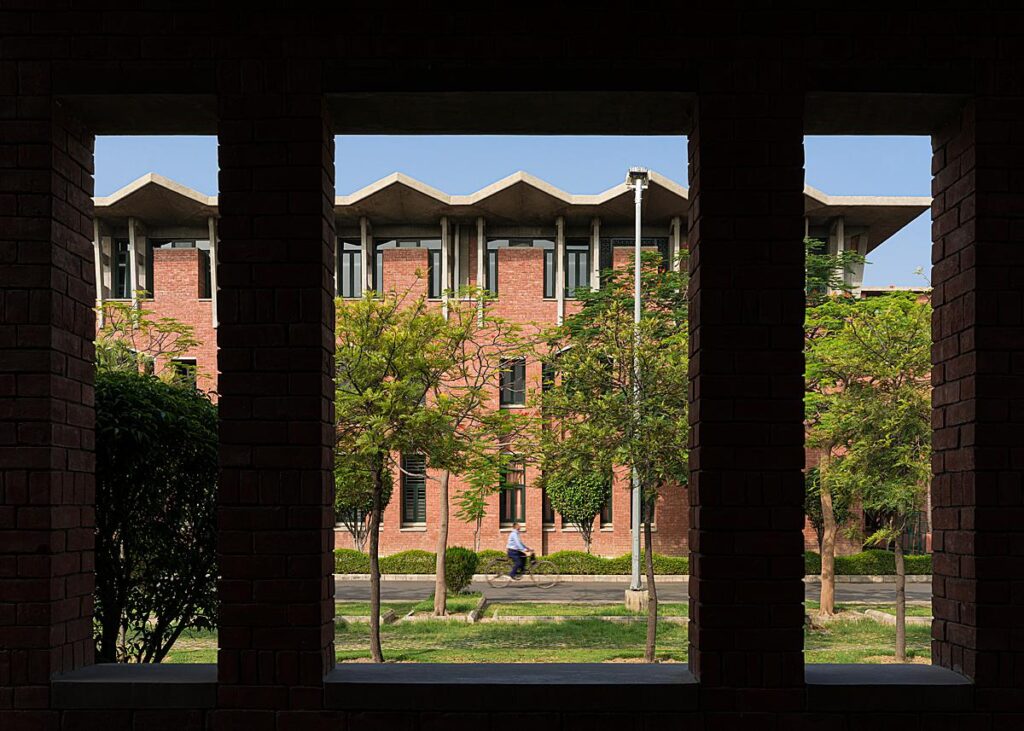
Nakul wraps up this project by sharing “The authorities were very cooperative in assisting and providing for help during the shoot as well as giving wonderful hospitality. This was one of the largest campuses that we have taken up as a detailed photography assignment and we are very glad to have achieved the desired result.
The campus design is a wonderful response to the context of the city of Kanpur, where the design will positively impact the students’ thought processes and create a better environment for learning. Design ideas such as exposed brick help keep the cost-effectiveness of such a large project.
The spatial planning of the campus was done keeping in mind symmetry and the plantation plan also compliments the built form. The concrete overhangs enhance the scale of the built form and provide a monumental quality to the vistas being created. Our images were hence, aimed to celebrate the monumentality, grandeur and interplay of the brick and concrete in natural light.”
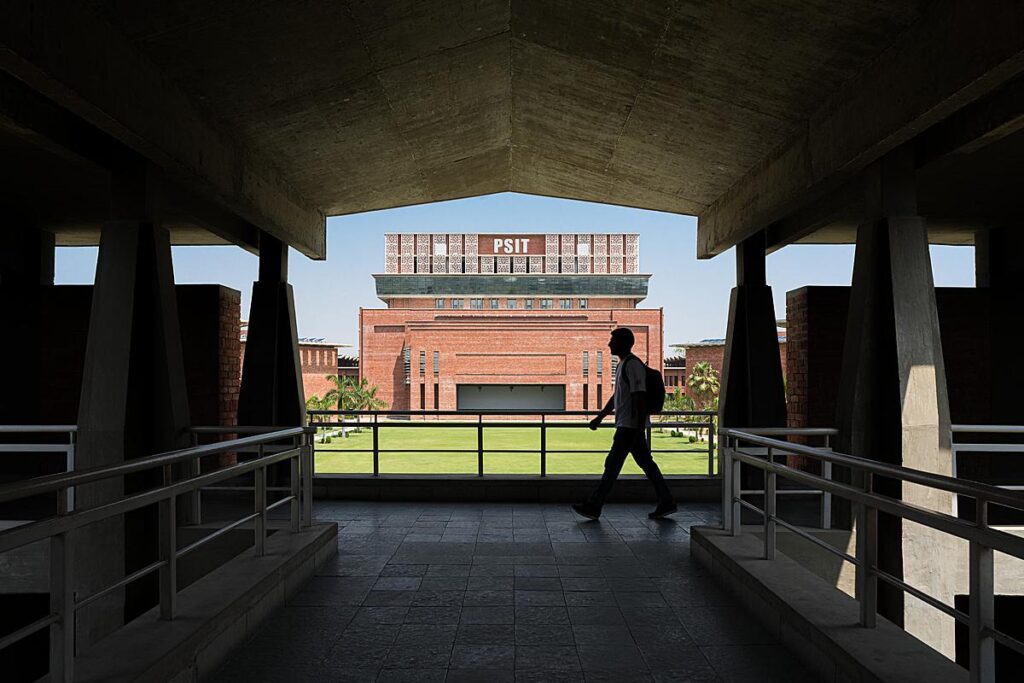
Many thanks to Nakul for sharing his experience photographing PSIT with us. See more of Nakul and his team’s work at nakuljain.com and on Instagram @nakuljaindotcom.
If you have a project you’d like to be considered for Project of the Week, you can submit it here.
